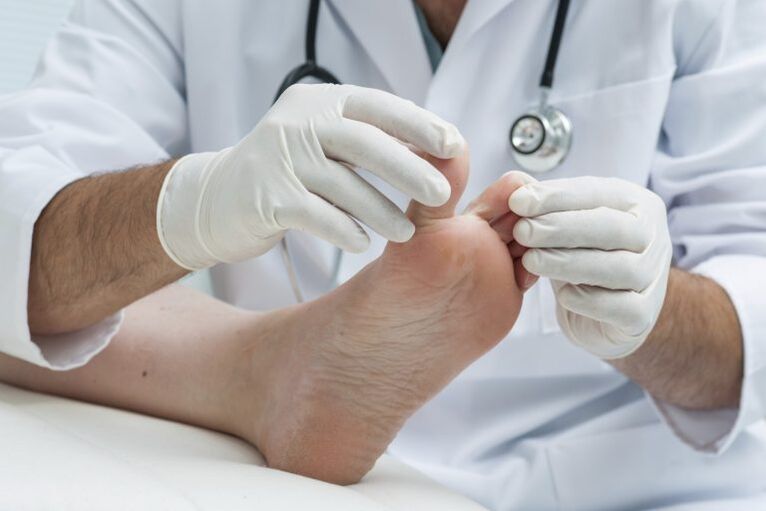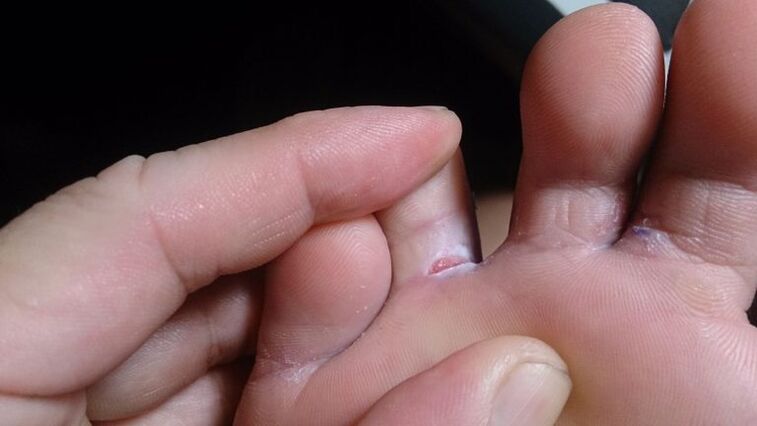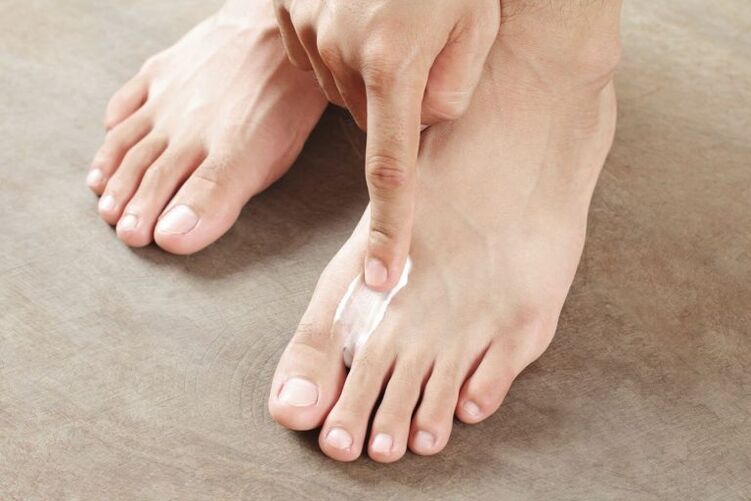The fungal damage to the legs begins from the areas between the fingers.Subsequently, the infection can spread to the feet and nail plates.The disease causes dermatophytic, mold or yeast fungi.According to statistics in our country, about 20 % of people who have a fungus on their feet.The severity of the disease depends on the variety of infections, but in any case, the ailment must be cured, since the peeling, the severe itching, the inflammation and the unpleasant smell of the legs cause serious discomfort.We will tell you how to get rid of the fungus on your legs.

Mushroom symptoms on the legs
To start, let's discover what a fungus is.This is a conditionally a pathogenic microorganism, which in a small amount can even live in the skin of healthy people, but in favorable conditions it begins to actively multiply. The signs of the leg fungus are directly related to the type of infection and the degree of participation in the process of skin and horn plates.Then, with foot damage, the mushrooms called Trichophyton Red, the following signs of the disease are present:
- The first symptoms of the fungus are generally noticed between the fingers.In addition, at first the infection affects the densest folds between fingers 3 and 4. Then, the ailment passes to the plants, the posterior and lateral surface of the feet.In addition, fungi can spread to nails and palm trees;
- In the future, the signs of the fungus complement each other with the dryness and thickening of the skin.The skin's skin fungus contributes to the formation of characteristic grooves.When the ailment progresses, the stratum layer seals occur, the calluses, cracks appear on the feet, the painful sensations are joined;
- The fungus in the skin of the legs is manifested by a characteristic dish or skin arc;
- Many patients are concerned about severe itching on the skin;
- The symptoms of the fungus in the legs can be expressed weakly with a erased form of the disease, which occurs with exudative variants of the lesion.In this case, soles on the feet can cover a minor eruption of diapers, sometimes bubbles appear.With this form, superficial peeling and cracks between fingers, such as itching, are practically absent.Often, patients do not pay attention to minor symptoms, so they do not resort to specialists;
- Another sign of the disease is Leuconychia, that is, the formation of white spots and stripes on nail plates;
- With the progression of the ailment, there is a multiple lesion of horny formations.

An interesting fact!Red tricoleum practically does not affect children.This is due to the regeneration of the nails and high -speed skin at this age.
The first signs of the fungus on the legs with the interdigital trichophyton injury are the following:
- Such shapes of the foot of the foot are located between the third and fourth fingers, on the lateral surface of the foot, its sole and in the fingers.
- Unlike the previous fungal disease, this type of fungi causes pronounced inflammatory phenomena.The process is never hidden.
- The peeling of the skin is accompanied by exudative processes.
- Often, leg damage is replenished with allergic reactions with rashes at the bottom of the leg, face, body.The photos of such injuries can often be found on the web.
- At the same time, nails are rarely affected.More often, this is a unique infection with the pathology of nail plates only in fingers 1 and fifth.
If you have a leg fungus, the symptoms of damage to the microorganisms of the genre candidate are as follows:
- The first manifestations of infection are swelling and skin hyperemia;
- The spotlights of the skin affected areas are usually surrounded by a edge in the form of an epidermis that was separated;
- Throughout the periphery, small bubbles with serous fluid, as well as small pustules, of the damage can be detected.

Types of leg fungi
Leg fungi signs may differ depending on the type of ailment:
- For the deleted shape, a slight peeled in the folds between the fingers is characteristic.The cracks are small and superficial, so they do not cause discomfort to the patient.
- The squamous form is characterized by the peeling of the lateral sections of the feet and interdigital holes.With this form, the skin fungus in the legs does not cause inflammation.There is rarely a slight hyperemia and itching.In the sole, the skin is like the lacquer, due to the thickening of the stratum corneum.The skin pattern is reinforced and peeled is possible in the folds.The patient does not feel discomfort.
- With hyperkeratotic, you can notice bluish plates and flat dry feet.In the central part of eruptions there are squamous layers.Around him, rude from the epithelium that separated.There are also small bubbles.The rashes can be merged into large spotlights and reach the entire sole.These types of fungi are similar to the signs of psoriasis.The discomfort causes moderate itching, dry skin and foot pain.
- The intergined form is accompanied by intertrigo between the fingers.The skin here is swollen, hyperemic and has a weight.This form is characterized by the development of deep and painful erosion.Patients are documented by severe itching, burning and pain.
- The dishuridotic form is characterized by the appearance of many bubbles with thickening in the upper part.The place of its location is the arc of the foot.Intodanitz folds and soles can also be affected.After opening the bubbles, the erosions of reddish rose of crying are formed.As the ailment, edema and hyperemia develop.Such types of fungi are very similar to eczema.

Fleet treatment
The treatment of the fungus of the legs in the initial stage is carried out using local medicines.There are about 20 forms of dosing of these products.This includes ointments, gels, varnish, aerosols, dust, solutions, foams and creams.
These drugs have a wide effect, therefore, they face fungi of different types and reduce the probability of relapse.In addition, local products for the treatment of fungus practically do not have toxic effects on the body.
It happens that the ailment has reached the stage when the patient cannot cure the patient only with local funds.In this case, the doctor prescribes systemic action antimicotic systems for oral consumption.
If we talk about how to cure the fungus on the legs with total damage to the feet and nail plates, then here is a combined therapy that consists in the use of systemic antimicotics, antifungal medications for local application and medical pedicure.

Fungal prevention
Now that he understands how to heal the fungus on his feet, it is time to talk about the prevention of this disease so that he no longer has to get rid of this ailment for a long time and painfully.
Among the preventive measures, the following can be called:
- With a decrease in metabolism, the deterioration of the intensity of blood circulation and the weakening of immunity, the appropriate conditions for fungal infection is created.That is why it is recommended to compensate for diabetes, atherosclerosis, varicose veins, osteoarthritis, arthritis, flat feet, immunodeficiency, sweating and obesity.All these diseases are considered indirect causes of fungal legs.
- Do not wear nearby uncomfortable shoes.The same applies to low quality leather products.The shoes must breathe, hygroscopic and comfortable.Once a month, it is recommended to carry out its preventive antifungal treatment using a special aerosol or aerosol.
- Avoid walking barefoot in public use.Carry out the disinfectant processing of your own bathroom, shower, floor and toilet.
- Use only your own pedicure supplies, towels, socks and shoes.
- Drink vitamins regularly.Walk in fresh air more frequently.Look sports.
- No shoes in shoes if your legs are wet.
If one of the family members has a fungus, then it must be cured, since it can become a source of other homes infection.Once a month, make a pedicure and remove thick or dead skin, which is a favorite fungal habitat.
















